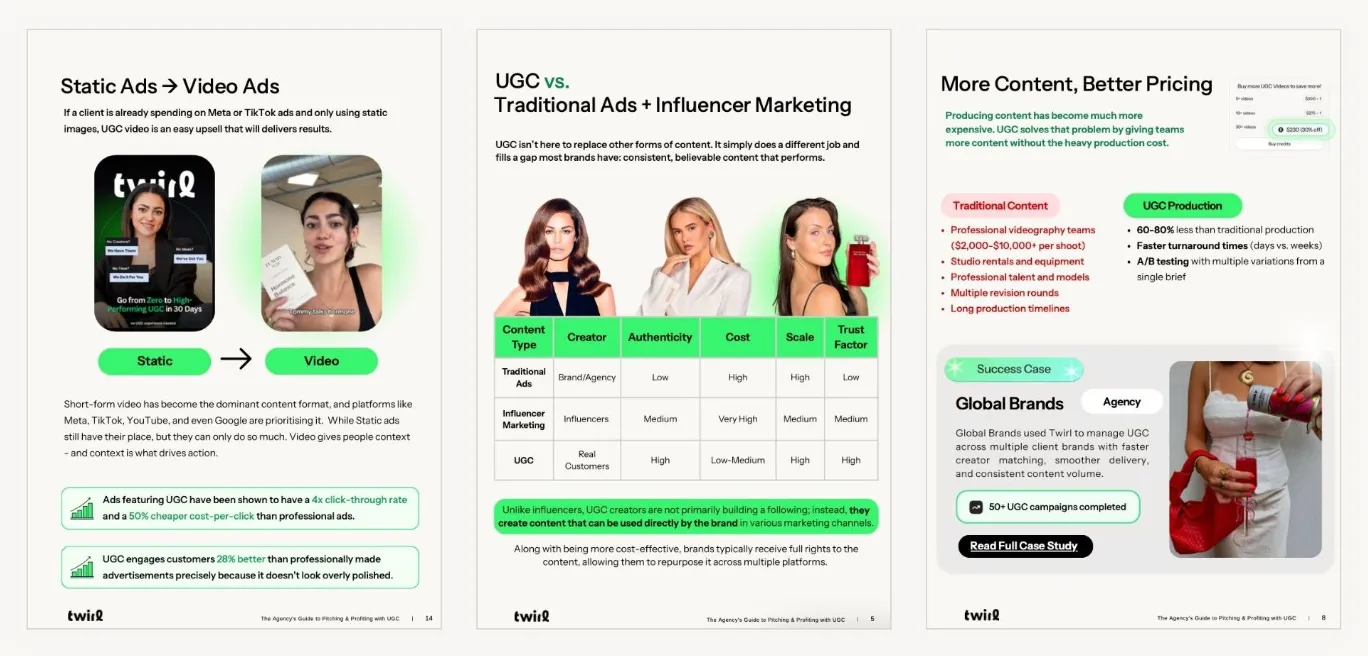In the age where content is king, understanding the nuances between Creator-Generated Content (CGC) and User-Generated Content (UGC) is paramount for brands that aim to harness the power of digital engagement. Here's how CGC stands apart from UGC.
CGC: UGC's Polished Cousin
At its core, CGC (creator-generated content) shares DNA with UGC — both are about creating content that resonates with real people. However, CGC takes it up a notch. While UGC can be both created by a creator or a customer (user), CGC is UGC with a professional twist: higher production values, a sharper focus on brand alignment, and a level of polish that only experienced creators can deliver.
Controlled Quality
While UGC in its original sense is often organic and spontaneous, CGC involves a more controlled and collaborative process with the brand. Creators often work directly with brands to produce content that aligns with marketing goals, ensuring consistency in messaging and quality.
Production Value
CGC typically boasts higher production value. Professional creators use equipment, editing software, and storytelling techniques to produce content that’s not just captivating but also aesthetically pleasing and technically sound.
Brand Safety
With UGC, there's always a risk of off-brand messages or poor-quality content if it’s created by a customer that doesn’t know the brand’s core values. CGC, on the other hand, allows for greater brand safety, as the content is co-produced and vetted to ensure it meets the brand's standards and conveys the intended message.
Authenticity and Relatability
UGC's strength lies in its raw authenticity and the relatable nature of content created by everyday users. CGC maintains this authenticity but elevates it through a creator's lens, offering a blend of relatability and professional insight that resonates with audiences.
Scaling and Consistency
For brands looking to scale their content strategy, CGC offers a more consistent and reliable output. While UGC, when produced spontaneously by a brand’s customer, is often hit-or-miss, CGC can be planned, scheduled, and produced to meet specific campaign timelines and objectives.
Engagement and Reach
Professional creators often have their own followings, which means CGC can tap into a broader audience. The content not only engages the brand's existing customer base but also extends reach through the creator's network.
CGC: The New Brand Narrative
As the term CGC gains traction, it's becoming clear that this isn't something different to UGC; it's the evolution of it. Professional creators acting as brand ambassadors, giving their expert opinions, artists crafting stories around products — this is CGC, and it's transforming the brand narrative of UGC.

.svg)

-min.avif)



.avif)

.avif)

.svg)
.svg)

.gif)